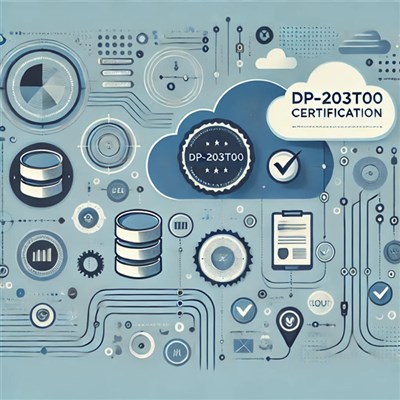
In today’s tech-driven world, server administrators play a pivotal role in ensuring that business-critical applications and services run smoothly. Whether you’re managing databases, ensuring network security, or overseeing cloud platforms, a server admin course provides the skills needed to excel in this essential IT role.
In today's digital age, server administration has become a crucial skill for any IT professional. Whether you're a novice or an experienced professional, undertaking a server administration training can help you further your career and stay competitive in the IT industry.
This blog delves into the critical skills you’ll learn in a server admin course and why they are so valuable in today’s IT landscape.
Introduction to Server Administration
At its core, server administration is about managing the hardware and software infrastructure that supports a company’s computing environment. Server admins ensure that networks, servers, and other critical systems run effectively, securely, and without interruption.
For IT professionals or aspiring administrators, a server admin course offers foundational and advanced skills that are crucial for managing today’s increasingly complex server environments. Courses typically cover a range of topics, from basic server setup to advanced networking and security concepts. These courses also prepare you for certifications like CompTIA Server+, Microsoft Certified: Azure Administrator Associate, or Red Hat Certified System Administrator (RHCSA), all of which are highly valued in the industry.
Here are the essential skills you’ll acquire during a server administration course:
1. Operating System Management
A strong grasp of operating systems is one of the foundational skills you will learn in a server admin course. Admins must understand the intricacies of different operating systems, including both Linux-based and Windows Server environments.
- Linux System Administration: Linux is widely used in server environments due to its stability and scalability. In the course, you will learn essential Linux commands, file management, user permissions, and process management. Understanding how to navigate the command line, automate tasks using shell scripts, and manage Linux services is crucial for a server administrator.
- Windows Server Management: Windows Server is another common platform used in enterprise settings. You will learn to install and configure Windows Server, manage Active Directory, group policies, and user roles. You’ll also explore Microsoft management tools like PowerShell to automate and simplify administrative tasks.
These operating system skills are critical for managing servers and their associated services in any environment.
2. Server Setup and Configuration
A server admin course typically begins with how to set up and configure a server from scratch. This involves understanding the physical hardware and then installing the necessary software to run the server.
- Hardware Configuration: You’ll learn about server hardware components such as CPUs, memory, storage devices, and networking hardware. Understanding how these components affect server performance and how to optimize configurations for specific workloads is essential.
- Software Installation: Beyond hardware, a course will teach you to install server software such as web servers (Apache or IIS), database servers (MySQL, PostgreSQL), and email servers. You’ll gain hands-on experience configuring these systems to meet specific business needs.
3. Networking Fundamentals
Networking is a critical aspect of server administration, as servers need to communicate with other systems on a network. In the course, you will gain a solid understanding of networking principles and how they relate to server management.
- IP Addressing and Subnetting: A server admin needs to know how to assign IP addresses and understand subnetting, which divides large networks into smaller, more manageable segments. This knowledge helps ensure that network traffic is efficient and properly managed.
- DNS and DHCP Management: DNS (Domain Name System) and DHCP (Dynamic Host Configuration Protocol) are vital for network communication. You’ll learn how to configure these services to ensure that servers and devices can communicate with one another seamlessly.
- Firewall and Security Configurations: Network security is an essential component of server management. Courses often cover firewall setup and management to protect servers from unauthorized access and attacks.
4. User and Access Management
Server admins are responsible for managing users and their access to the server’s resources. In the course, you will learn about:
- User Account Management: You’ll discover how to create, manage, and secure user accounts. This includes assigning permissions based on user roles and ensuring that users have the necessary access to perform their tasks without compromising security.
- Active Directory: In a Windows environment, Active Directory (AD) is a directory service that manages users, groups, and computers within an organization. You’ll learn to configure and manage AD, set up group policies, and ensure that users have the right level of access.
- Access Control Lists (ACLs): In a Linux environment, you will learn about ACLs, which allow you to fine-tune user permissions beyond basic ownership models, ensuring that different users can access different files or resources as needed.
5. Server Security and Monitoring
In any IT environment, security is paramount. Server administrators must ensure that their systems are protected from internal and external threats.
- Security Best Practices: You’ll learn to implement security best practices such as using strong authentication methods (e.g., SSH keys, multifactor authentication), installing and configuring firewalls, and keeping the server updated with the latest security patches.
- Intrusion Detection and Response: Many server admin courses also cover intrusion detection systems (IDS) and incident response plans. You’ll learn how to monitor for signs of breaches or attacks and respond effectively to any incidents.
- Monitoring and Performance Tuning: Admins must monitor server performance regularly to ensure everything runs smoothly. You will learn to use tools like Nagios, Zabbix, or Windows Server Monitor to keep track of CPU usage, memory allocation, and other critical performance metrics. If any issues arise, such as a server running out of resources or becoming slow, you’ll know how to troubleshoot and optimize performance.
6. Backup and Disaster Recovery
Data loss can be catastrophic for any business, making backup and disaster recovery essential skills for any server admin.
- Backup Strategies: You’ll learn to implement backup strategies that suit the business’s needs, from simple file-based backups to complex system imaging and snapshot solutions.
- Disaster Recovery Plans: In the event of server failure, you need to have a disaster recovery plan. The course will teach you to create and implement disaster recovery strategies, ensuring minimal downtime and data loss in case of an emergency.
7. Virtualization and Cloud Services
With the growing reliance on virtualization and cloud platforms, server admins need to be proficient in these technologies.
- Virtualization: Virtualization allows multiple operating systems to run on a single physical server, saving costs and improving efficiency. You will learn to manage virtual machines using platforms like VMware, Hyper-V, or KVM, and understand how to optimize virtual environments.
- Cloud Computing: Cloud platforms like AWS, Azure, or Google Cloud are essential in modern IT environments. In many server admin courses, you’ll learn how to manage and deploy cloud-based servers, understanding hybrid cloud setups and how to maintain security and compliance.
8. Automation and Scripting
Automation is an increasingly important skill for server admins, as it allows you to streamline repetitive tasks and manage multiple servers efficiently.
- PowerShell and Bash Scripting: You’ll learn how to use scripting languages like PowerShell (for Windows) and Bash (for Linux) to automate server tasks such as backups, updates, and user management. Automation improves efficiency and reduces the chances of human error.
- Configuration Management: Tools like Ansible, Puppet, and Chef help automate server configuration across many machines. These tools are essential for managing large environments or handling complex deployments.
Conclusion
A server admin course equips you with the technical knowledge and hands-on experience to manage server infrastructures effectively. By mastering essential skills like operating system management, networking, security, backup and recovery, and automation, you’ll be well-prepared to handle the challenges of modern IT environments.
Whether you’re just starting in IT or looking to advance your career, gaining server administration skills can open doors to numerous opportunities in a rapidly growing field. With the increasing reliance on cloud platforms, virtualization, and automation, server administrators will remain in high demand for years to come.
At Koenig Solutions, a leading IT training company, we offer a wide range of server administration training courses that can help you gain the skills and knowledge necessary to excel in your career. Our courses are designed and delivered by industry experts and are tailored to meet the needs of both beginners and experienced professionals.
In conclusion, a server administration course is a valuable investment in your IT career. It not only equips you with essential skills but also enhances your credibility in the industry. So, whether you're looking to advance in your current job or transition into a new role, server administration training can help you achieve your career goals.







COMMENT